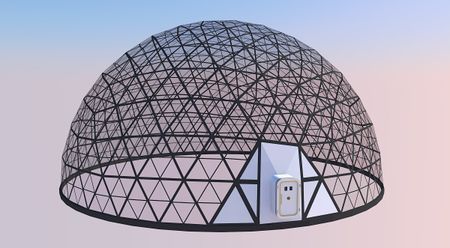Glass
Glass is a transparent, strong, brittle material resistant to most chemicals. Glass is a mainly a compound of Silica (SiO2), mixed with other elements such as chlorines, iron and alumina oxides. Glass is made mainly from silica sand and requires thermal energy. Glass may be combined with plastics to increase its strength and radiation shielding capabilities.
Glass is an excellent candidate for ISRU, as the source materials are abundant on Mars and local production costs should be orders of magnitude bellow transportation costs from Earth. Glass embodied energy is 6-15 MJ/kg for finished products.
A glass-blower can create a very wide variety of useful vessels, utensils, instruments, and chemical equipment from Martian sand, although these may have to be designed very differently from the analogous equipment on Earth. The glass-blowing craft requires only other small-scale crafts for its equipment (brick-making for the furnace and blacksmithing for its iron tools), thus qualifies as a small-scale craft suitable for a frontier town (small and largely self-sufficient) economy.
Fiberglass Glass is not commonly used as a structural material because it is brittle. One solution to this problem is to use glass fibers in a composite material, fiberglass or FRP. The matrix that holds the glass fibers is usually a plastic, epoxy or polyester resins. Metal-matrix composites and even glass-matrix composites do exist, but are little used on Earth.
Glass fibers are also used to transmit light for communication systems or lighting in the form of optical fibers.
Glass sheets Flat plane glass, also known as sheet glass or Soda Glass is a common construction material on Earth.
Due to the 1/3 gravity, windows, structures, and chemical equipment made out of glass might be manufactured much larger than on Earth, yet still hold up under their own weight and be easy to transport. Large glass bricks or thick windows may make excellent structural material. Water ice sandwiched and sealed between two layers of glass may make an excellent radiation shielding structure. Pressure vessels with glass elements are more difficult to construct than opaque metallic vessels. Water affects the structural strength of glass. In some cases where water is not present, very strong glass might be produced on Mars. (ref needed)
While the Martian population is small, goods made by talented Martian artists and craftsmen out of native Martian materials will probably have high curiosity and scarcity values on Earth, and thus may fetch high premiums as collectibles.







